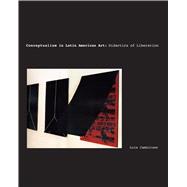
| Acknowledgments | p. xiii |
| Introduction | p. 1 |
| Salpicon (Medley) and Compota (Sweetmeats) | p. 9 |
| Agitation or Construction? | p. 16 |
| The Terms: "Indefinitions" and Differences | p. 22 |
| Conceptual Art and Conceptualism in Latin America | p. 29 |
| Simon Rodriguez | p. 37 |
| The Tupamaros | p. 44 |
| Tucuman arde: Politics in Art | p. 60 |
| The Aftermath of Tucuman arde | p. 73 |
| Figuration, Abstraction, and Meanings | p. 93 |
| The Intellectual Context | p. 102 |
| The Input of Pedagogy | p. 109 |
| The Importance of Literature | p. 116 |
| Poetry and Literature | p. 131 |
| The Markers of Latin American Conceptualism | p. 153 |
| Postpoetry | p. 162 |
| Postfiguration | p. 171 |
| Postpolitics | p. 186 |
| The Destruction and Survival of Locality | p. 209 |
| From Politics to Identity | p. 214 |
| Diaspora | p. 223 |
| The Historical Unfitting | p. 245 |
| From Politics into Spectacle and Beyond | p. 252 |
| Beyond Art | p. 259 |
| Notes | p. 267 |
| Bibliography | p. 311 |
| Index | p. 327 |
| Table of Contents provided by Ingram. All Rights Reserved. |
The New copy of this book will include any supplemental materials advertised. Please check the title of the book to determine if it should include any access cards, study guides, lab manuals, CDs, etc.
The Used, Rental and eBook copies of this book are not guaranteed to include any supplemental materials. Typically, only the book itself is included. This is true even if the title states it includes any access cards, study guides, lab manuals, CDs, etc.